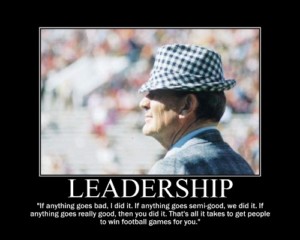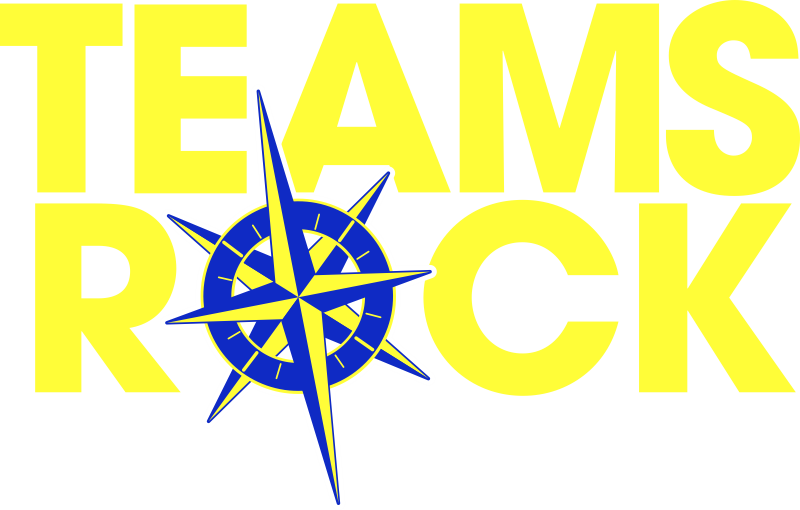What sort of Leadership Development needs to take place to facilitate effective teamwork in the workplace?
Before discussing leadership development, we must understand that the difference between managing and leading has often been defined as, “You manage things and you lead people.” I absolutely agree with that. You can lead individuals and you can also lead a team. Keep in mind that different things that come into play with each.
An effective leader needs to be able to do the typical management things; managing the books, the numbers, the projects, and other things of that nature. They also have to be able to lead the people, and that means effectively delegating to the correct people. It also means recognizing the differences in how you develop and motivate people.
Some people need to receive high praise. Recognize them in front of an audience or in an all-hands meeting. Others need to be recognized with a very simple “thank you” note. Yet, the best way to motivate others might be to stimulate them with a formal letter that goes into their HR file, depending on the organization. Still others might need to be recognized by simply giving them more duties and responsibilities. Not more dumpage of work, just more duties and responsibilities.
There are different styles and different ways that employees want to be motivated. Now, inside each one of those individual styles, there’s what’s called intrinsic and extrinsic motivators. Both are very powerful and necessary for effective leaders. Intrinsic motivators generally last longer than an extrinsic.
Here’s an example of an extrinsic motivator. Many organizations have something called a Spot Award. It’s something of a tangible value. Employees may get a gift card to a restaurant for finishing up a project. They could get a spot bonus award of $100 cash. Whatever it is, those are all extrinsic motivators and they last as long as the extrinsic value is there. Once the extrinsic value has worn off, that motivation is gone. Plain and simple.
An intrinsic motivator, on the other hand, has much longer and, in many cases, deeper effect. Now, there are times for extrinsic motivators, don’t get me wrong, but intrinsic motivators are powerful. That’s where you simply take two minutes to hand-write a note, or put a post-it note on an employee’s computer screen while they are away from their desk, “Hey Bob, I really appreciate the extra effort you put in last week. Thanks.”
The secret is to be timely and very specific. If they’re really the person who bailed you out of a situation, then you can give them a pack of Lifesaver candy for being a “life-saver.” Now, that may seem cheesey, and for some it is. Sometimes though, “corny” and “dumb” is irrelevant to the type of person who’d think that it is the funniest thing in the world. It is not the cost of the item, it is the value it brings to the person or persons. Conversely, there’s somebody else on the team who might look at that pack of Lifesaver candy and think, “That’s stupid.” If you give LIfesavers to that person, you’ve done nothing. A good leadership development instrument is understanding what types of motivators work for what types of people, on an individual basis.
Another key element in leadership development is learning how the leader develops employees. I really believe that the multi-level marketing industry has it right in how they develop other leaders. In traditional corporate America, many leaders are afraid to develop employees because they are afraid the person they are developing may outperform them and leave them in the dust. In multi-level marketing, if I recruit someone into my business, I want them to be successful because the more successful they are, the more successful my business will become. So the concept is there. If we think about that same concept; that you need to produce and build a better employee, to let them get better, guess what starts? Developing trust.
You must have trust. As a manager, I have to trust that you, as the employee, are going to do your job. And you have to trust that I’m not going to stab you in the back. I have to that, when I give you power, you’re going to be successful. And if you move up and move past me, more power to you because the organization then wins. There’s a great quote from Indiria Ghandi that says, “There are two kinds of people in the world. Those who do the work and those who take the credit. Try to be in the first group, there is less competition.” When we, as an organization come to that understanding, the person who believes, “I don’t care who gets the credit,” is the leader.
 Bear Bryant, the head football coach for Alabama years ago said, “If anything goes wrong, I did it. If anything goes pretty much right, we did it. But if anything goes perfect, absolutely right, then you did it.” Leadership is about developing the people to get better. You want to see them succeed.
Bear Bryant, the head football coach for Alabama years ago said, “If anything goes wrong, I did it. If anything goes pretty much right, we did it. But if anything goes perfect, absolutely right, then you did it.” Leadership is about developing the people to get better. You want to see them succeed.
I often ask my audiences to think about the best boss you’ve ever had in your life. Many people will go back to the early days of their work life history. It could be their first, second, or third boss. Then I ask them to write down three reasons why that person is the best. Inevitably, 90 percent of the responses I receive are about how they helped them develop. It had nothing to do with teaching them how to do the job, but about how they helped them develop as an employee, or as a person. “They challenged me.” “They pushed me.” “They trusted me.”
A great leader must also understand how to manage up. That means understanding your boss. How do you work with that boss? Some of the same principals and concepts apply whether you’re leading employees or working with your boss, it’s just with a slightly different approach.
Related articles: Types of Leadership Styles, Leadership Development Program(s), Leadership Team Development, Difference Between Management and Leadership
Other topics that may be of interest to you: Organizational Culture, Teamwork in the Workplace, Employee Training & Development, Employee Retention
MAKE YOUR TEAMS ROCK!!
Is your organization stuck in a rut? Do your employees work as individuals without a common goal? Does productivity lag as the day drags on?
When your employees collaborate, communicate and function as a team, productivity and office happiness reach new heights. From senior leaders to front line workers, everyone is a part of the team. Get your team together for a team building experience from Gregg Gregory.
Gregg Gregory is an experienced Certified Speaking Professional specializing in the development of team cultures. Book Gregg today and get your teams rocking!
Gregg’s keynote programs motivate and train attendees to create better teams in the workplace, increasing efficiency and employee happiness.
Directly involve your employees in one of our interactive team training sessions.

